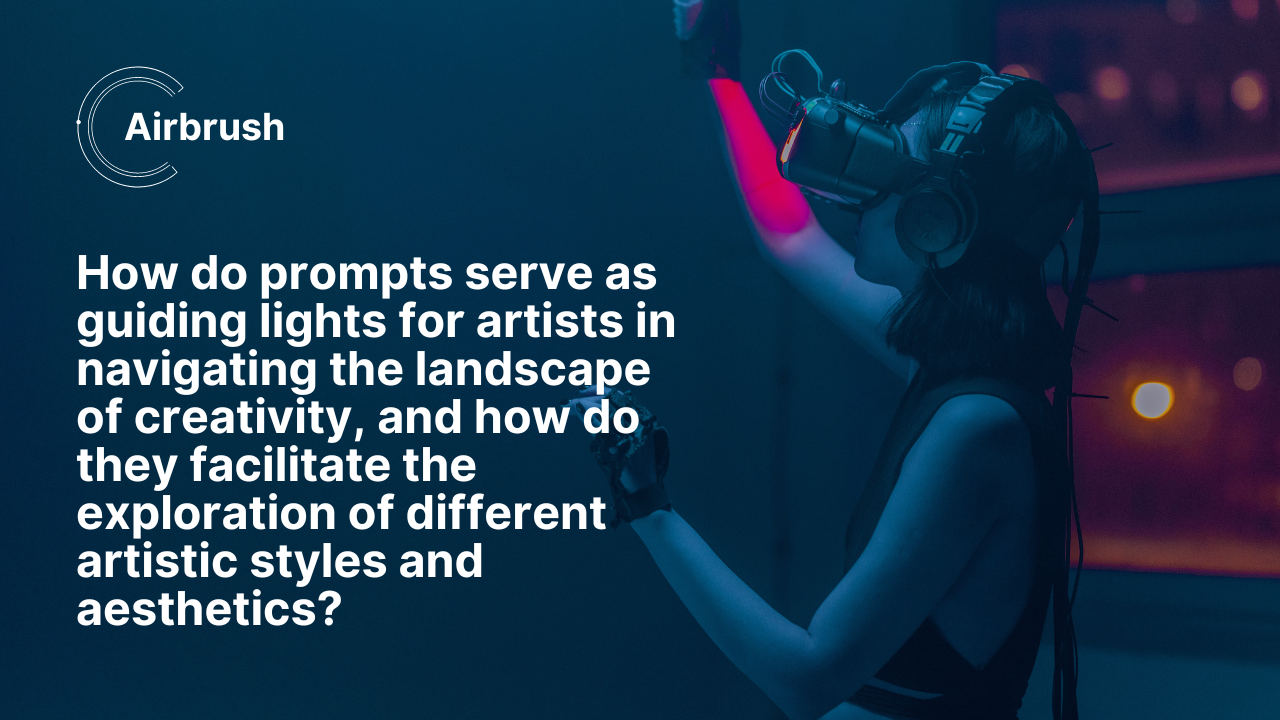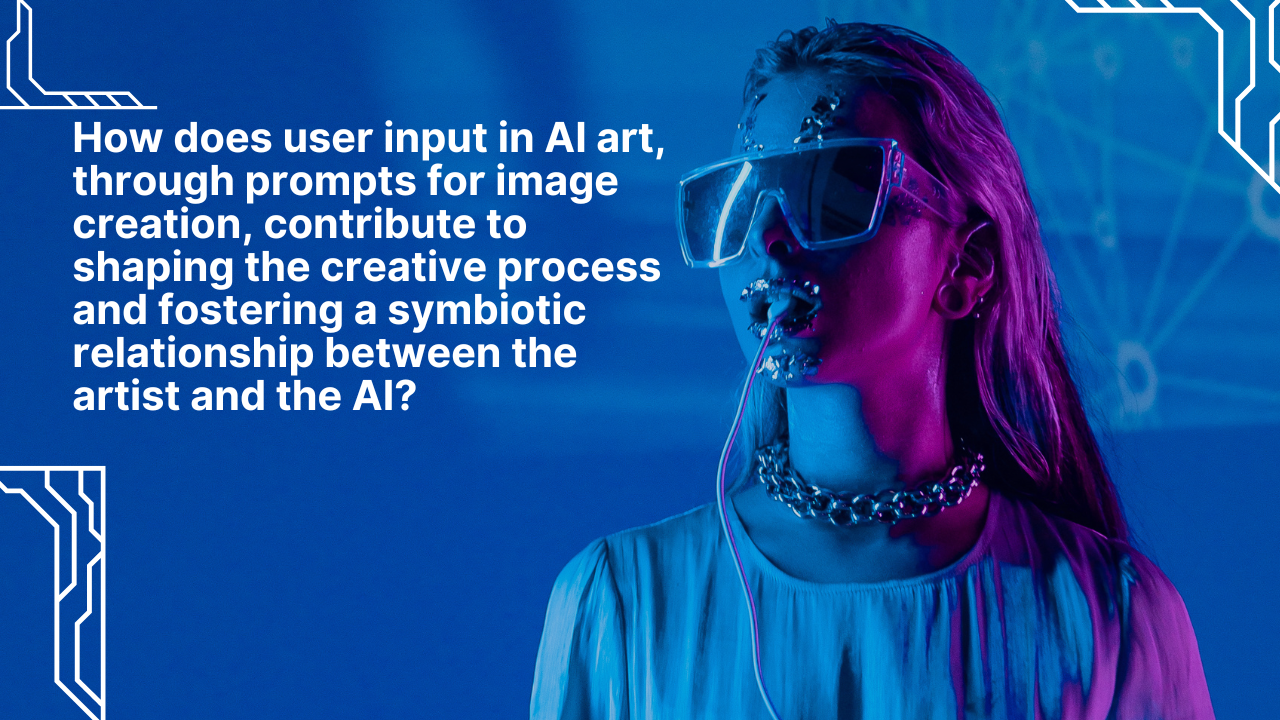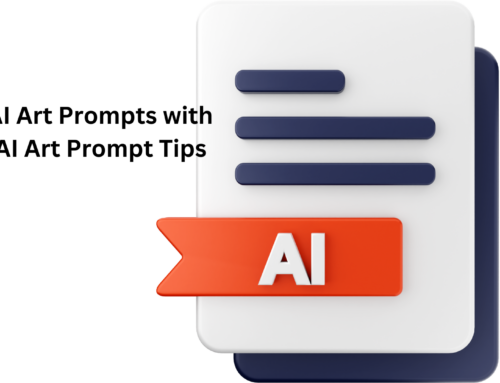Artificial Intelligence (AI) is becoming quite the artist, my friends! Can you imagine a computer creating beautiful paintings or composing soulful music? Well, it’s happening, and it’s all thanks to AI art prompts and user input. Let’s dive into this fascinating world where technology meets creativity.
First things first, what are prompts? Think of them as instructions or suggestions given to generative AI to guide its creative process. These prompts can be anything from a simple phrase to a detailed description of what the user wants. It’s like giving the AI a starting point or a theme to work with. Without prompts, AI would just be like a blank canvas with no idea what to paint!
Now, let’s talk about user input. This is where we, as humans, come into play. We interact with the AI, providing feedback, making choices, and sometimes even collaborating directly with it. Our input shapes the direction of the artwork or the music being created. It’s like having a conversation with the AI, where both parties contribute ideas to come up with something amazing.
But why is all this important? Well, for starters, it allows AI to tap into our creativity and learn from it. By analyzing the prompts and user input, AI algorithms can understand what makes art appealing to us humans. This means AI can create pieces that resonate with our emotions and preferences.

The Power of AI Art Prompts
Prompts are like the starting point for AI art. They’re like giving a hint or idea to the computer about what to create. It could be a word or a picture. These prompts guide the computer to make something unique and interesting.
According to Shubham Singh, an AI Expert at demandsage.com, “As an experienced AI expert specializing in generative art, I can attest to the transformative power of prompts in shaping the styles and aesthetics of generated artwork. Artists leverage prompts as guiding principles, directing AI algorithms towards desired outcomes. By providing specific instructions or themes, artists can steer the generative process towards particular artistic styles, whether it’s mimicking the brushstrokes of a certain painter or embodying the essence of a particular artistic movement. The nuanced interplay between prompts and AI algorithms allows for the creation of diverse and visually captivating artworks, each imbued with the intended aesthetic sensibility.
However, the utility of text prompts in describing complex visual concepts does encounter limitations. While text can articulate board ideas and themes, it may struggle to capture intricate visual nuances or detailed compositional elements. Visual art often communicates through subtle gestures, color palettes, and spatial relationships, which can be challenging to convey effectively through text alone. As a result, artists may find themselves grappling with the gap between textual descriptions and the nuanced visual output produced by AI systems, potentially hindering their ability to fully articulate their artistic vision.
Looking ahead, the future of AI art tools holds promise for offering more intuitive ways for users to provide input and exert control over the generation process. Advancements in machine learning and human computer interaction are facilitating the development of more sophisticated interfaces, enabling artists to interact with AI systems in increasingly intuitive and nuanced ways. From gesture based inputs to multimodal interfaces that blend text, images, and other forms of input, future AI art tools may empower artists with greater agency and control, fostering deeper collaboration between human creativity and machine intelligence.”
In the ever-evolving landscape of AI-generated art, the synergy between human creativity and technological innovation continues to redefine the boundaries of artistic expression. As we navigate the nuances of text prompts and their limitations in capturing intricate visual concepts, the horizon of possibilities expands with each advancement in machine learning and natural language processing. The future promises a more seamless integration of multi-modal inputs, empowering artists to communicate their visions with greater precision and depth. With this evolution, AI art tools are poised to revolutionize the creative process, offering a dynamic platform where imagination thrives and artistic boundaries dissolve, ultimately shaping a new era of innovation in the intersection of technology and the arts.
Here’s what Mr. Laviet Joaquin, the Marketing Head at TP-Link, has to say on this “Artists can use prompts to control the style or look of their generated artwork by giving clear, short instructions tailored to the artist’s vision.
For example, they can enter words or phrases that trigger certain emotions, topics, or visuals they want to include.
By using prompts effectively, the artist can direct the AI to create artworks that match their vision, helping to improve their creative process.
But text prompts have their limits. They can only capture basic visual ideas or themes. Intricate artistic expression, like texture, depth, or complex details, can be lost in the translation.
Furthermore, the interpretation is subjective, leading to inconsistencies between the artist’s intention and the AI’s output. While text prompts can be a great place to start, they don’t capture the complexity of artistic vision. This presents challenges in achieving the desired results.
Looking ahead, the future of AI art tools has the potential to provide users with more intuitive ways to input and manage their generation process. Machine learning and NLP can help AI algorithms better comprehend and understand user commands, allowing for more interactive and dynamic experiences.
For instance, integrating multi-modal inputs (voice commands, gesture recognition, etc.) could effectively improve the user’s ability to communicate their creative preferences.
As technology advances, the user experience of AI art tools could become more intuitive and flexible, allowing users to explore new areas of artistic expression more efficiently and accurately.”
Prompts are like compasses guiding artists through the vast landscape of creativity, offering direction and inspiration along the way. They illuminate the path toward specific styles or aesthetics, helping artists hone in on their desired artistic vision. Through exploration and research facilitated by prompts, artists delve into diverse artistic realms, expanding their horizons and enriching their creative repertoire. Just as studying various art movements informs one’s own artistic practice, immersing oneself in AI art prompts associated with different styles empowers artists to imbue their work with depth and nuance. It’s a journey of discovery and expression, where prompts serve as beacons illuminating the way toward artistic mastery.
Adding to this discussion, Benedict Ang, a Senior Fitness Coach at Total Shape, shares his view “Prompts serve as a sort of creative roadmap, providing direction and inspiration along the artistic journey. They act as guiding lights, steering artists toward particular styles or aesthetics they wish to explore. For example, if I’m aiming for a minimalist vibe in my artwork, I might use prompts that emphasize simplicity, clean lines, and muted colors. These prompts become like signposts, pointing me in the right direction as I navigate through the creative process, ensuring that my final piece resonates with the desired aesthetic.
Then there’s the aspect of research and exploration, which is crucial for artists seeking to expand their horizons. By immersing themselves in various prompts associated with different styles or aesthetics, artists gain a deeper understanding of the elements that define each artistic movement. It’s akin to studying the techniques and characteristics of different art movements to inform one’s own work. So, if I want to delve into surrealism, I’d immerse myself in prompts that evoke dreamlike imagery, unexpected juxtapositions, and symbolic motifs, allowing me to absorb the essence of the style and infuse it into my art.”
Exploring the Role of Prompts and User Input in AI Art Creation
So, let’s dive into how prompts and user input shape the world of AI art. When we talk about AI art, we’re essentially discussing digital art work created with the help of artificial intelligence. But here’s the twist – these AI tools aren’t just making art on their own. They need a nudge in the right direction, and that’s where prompts come in. Think of prompts as little suggestions or guidelines you give to an AI art generator, telling it what you want to see. It’s like telling a friend, “Hey, paint me a picture of a serene beach with palm trees swaying in the breeze.” Without that prompt, the AI might just paint a random landscape!
So, why are prompts for AI art so crucial? Well, imagine if you didn’t give any directions to an AI model. It might churn out all sorts of weird and wacky stuff that doesn’t match what you had in mind. But with effective AI art prompts, you can guide the AI towards creating something that fits your vision. These prompts can range from simple instructions like specifying the art style or color scheme to more complex ideas like emotions or themes you want to convey.
Now, let’s talk about the tools we use to create AI art. There are tons of AI image generators out there, each with its own set of features and capabilities. Some of the best AI art tools, like those found in apps or online platforms, allow users to input prompts and generate images based on those prompts. These tools act as the bridge between our imagination and the AI’s creative prowess, helping us bring our ideas to life in the form of stunning digital artwork.
How Prompts Influence AI Artistic Expression with AI Art Prompt Examples
Now, let’s chat about how these prompts actually shape the way AI expresses itself artistically. Imagine you write AI art prompts, telling the AI what you want to see, and then boom! The AI goes to work to generate an image based on those prompts. But here’s the cool part – The best AI art prompts you give can really influence what kind of art the AI churns out. It’s like giving the AI a little nudge in the right direction, guiding it towards creating something that matches your vision. So, if you’re into pop art, you might write AI art prompt ideas that focus on vibrant colors and bold lines to get the best results.
Now, let’s get into some examples of how prompts can help the AI create amazing artwork. Let’s say you want the AI to generate art inspired by nature. Instead of just telling it to “create nature-themed art,” you could write effective AI art prompts like “paint me a serene landscape with rolling hills and a clear blue sky.” By providing specific details and imagery, you’re helping the AI visualize what you’re looking for and guiding it in creating the perfect piece.
But hey, writing AI art prompts isn’t just about giving instructions – it’s also about sparking creativity. When you use prompts to guide the AI in creating art, you’re essentially collaborating with the machine to bring your ideas to life. It’s a fascinating dance between human imagination and AI ingenuity, where each side contributes something unique to the creative process. So, next time you’re itching to create some AI-generated art, don’t forget to use prompts to unleash the full potential of your favorite AI tool and leap into a world of endless artistic possibilities!
Understanding the Impact of User Interaction in AI Art
Now, let’s delve into how user interaction can really shake things up in the world of AI art. You see, playing around with different prompts is both an art and a science. When you use an AI generator, you’re not just a passive observer – you’re an active participant in the creative process. It’s like having a virtual canvas at your fingertips, ready to come alive with every prompt you throw its way. Whether you’re using a free AI art generator or a more advanced tool, the way you craft those prompts can really make or break the final masterpiece.
So, how exactly do AI art generators work their magic? Well, it all starts with the prompts you give them. These prompts act as the guiding light, showing the AI which direction to go in. Whether you’re using AI image generation or experimenting with different AI art prompts to get just the right vibe, the key is to find that sweet spot where your vision meets the AI’s capabilities. By guiding the AI with effective prompts, you’re essentially collaborating with it to bring your artistic vision to life.
But here’s the thing – crafting effective prompts isn’t always easy. It takes a bit of trial and error to figure out what works best for you and your chosen AI tool. That’s why it’s important to experiment with different prompts and see how the AI responds. Whether you’re using prompts to create free AI art or trying to evoke a specific emotion with your artwork, don’t be afraid to think outside the box and push the boundaries of what’s possible. After all, that’s what art is all about – pushing the limits and exploring new horizons.
Examining User Input in AI Artistic Processes
Let’s take a closer look at how user input plays a big role in the artistic process of AI. Imagine you’re crafting your prompts for an AI art project. You’re not just giving directions; you’re setting the mood of the image. It’s like being the director of your own digital masterpiece! Whether you’re using cool AI art prompts or experimenting with creative prompts that bring your artistic vision to life, every word you choose can steer the AI model toward creating something truly extraordinary.
Crafting effective AI art prompts is key to getting the best results from your AI tool. Take, for example, the AI art prompt generators offered by tools like Midjourney. They provide a platform where you can experiment with AI art, using 25 AI art prompt examples to spark your creativity. By honing in on the specific elements of your image that you want the AI to focus on, you can better guide the AI toward generating the perfect piece of art.
But it’s not just about crafting prompts – it’s also about understanding how they influence the AI’s creative process. The better you understand the nuances of crafting AI art prompts, the better the AI will be able to interpret and execute your vision. So, whether you’re using AI art generator tools or experimenting with crafting AI art prompts from scratch, remember that every word counts. With a little bit of creativity and a whole lot of experimentation, you can unleash the full potential of AI art and create something truly remarkable.

Exploring the Human Element in AI Art Through User Input
Let’s delve into the human touch in AI art through user input. When you give the AI prompts for AI image creation, you’re essentially giving it a glimpse into your imagination. It’s like describing a scene to a friend and then seeing how they interpret it. Whether you’re using text prompts or prompt based on its content, the goal is to help the AI understand what you want to see in the image. By adjusting your prompts and allowing the AI to learn from your feedback, you’re playing an active role in shaping the creative process.
One fascinating aspect of user input in AI art is the ability to train your own image model. This means you can provide the AI with a dataset of images and corresponding prompts, teaching it to generate art in a specific style or theme. With prompts for AI image creation, you can guide the AI in understanding the nuances of different art styles, allowing it to create truly unique pieces that reflect your vision.
As you explore different AI models and tools, it’s essential to find the one that best aligns with your creative goals. Some AI-driven art generators excel at text-to-image prompts, while others are better suited for prompts to guide AI in generating images from scratch. By experimenting with different AI tools and prompts, you can see how the AI interprets your input and adjust your prompts accordingly. In doing so, you’re not just creating art – you’re forging a symbiotic relationship with the AI, allowing it to learn and grow alongside you in the creative process.
Conclusion
In conclusion, the journey through prompts, user input, and AI in artistic endeavors is like weaving a beautiful tapestry. It’s a blend of art and science, where your words guide AI tools to produce mesmerizing art projects. Remember, the key is to craft thoughtful word prompts, experiment with different AI art prompts, and always stay open to learning and trying new things. By following these tips and best practices, you’ll navigate this relationship with confidence and unlock endless possibilities in AI art creation.






Leave A Comment